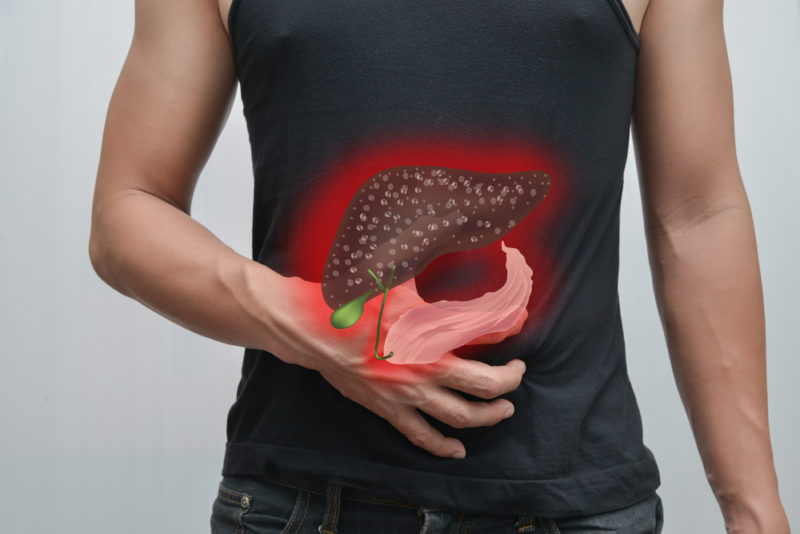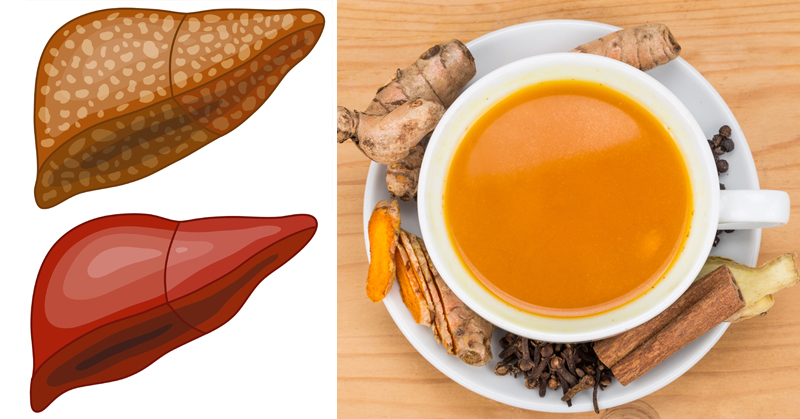Most people can’t look in the mirror and say, “My liver is fat.” But a fatty liver is a very serious, though often silent, problem. Learn the signs of liver disease.
Nonalcoholic fatty liver disease (NAFLD), in particular, is a disorder that refers to the accumulation of fat in the livers of people who drink little or no alcohol. In some people, the fat that accumulates can cause inflammation and scarring in the liver, leading to a more serious form of NAFLD known as nonalcoholic steatohepatitis (NASH) and eventually cirrhosis. (1)
Causes of Nonalcoholic Fatty Liver Disease
NAFLD occurs when the liver has trouble breaking down fats, causing them to build up in the liver tissue. It’s also part of metabolic syndrome, which is characterized by diabetes or pre-diabetes, and the individual being overweight or obese, with elevated blood lipid levels and high blood pressure.
It’s believed that NAFLD affects as many as 1-in-3 to 1-in-5 adults, and over 1-in-10 children in the United States. Obesity is thought to be the most common cause of fat buildup in the liver, and it’s estimated that about 2/3 of obese adults and 1/2 of obese children may have fatty liver disease. (2)
While researchers know less about what causes NASH to develop, they’ve identified several risk factors that may contribute to its development: (3)
- Oxidative stress – an imbalance between pro-oxidant and anti-oxidant chemicals that cause liver cell damage.
- Production and release of toxic inflammatory proteins by the patient’s own inflammatory cells, liver cells or fat cells.
- Liver cell necrosis or death, known as apoptosis.
- Adipose tissue (fat tissue) inflammation and infiltration by white blood cells.
- Gut microbiota (intestinal bacteria) may also play a role in liver inflammation.
Symptoms of Nonalcoholic Fatty Liver Disease
Unfortunately, those who develop nonalcoholic fatty liver disease may experience little to no symptoms. but there are often several tell-tale signs of a problem, including: (4)
- Unexplained weight loss
- Trouble concentrating
- Abdominal pain (Children may exhibit abdominal pain in the center or the right upper part of the abdomen)
- Weakness and fatigue – This type of fatigue does not respond to rest.
- Skin discoloration – Those with nonalcoholic fatty liver disease may have patchy, dark discoloration of the skin, most commonly on the neck and under the arms.

Natural Remedies for Nonalcoholic Fatty Liver Disease
First, those with NAFLD need to lose weight in order to lower levels of fat in the liver. But not everyone with fatty liver disease is overweight! In addition to weight management, they may be told that the need several medications in order to lower lipid levels, manage insulin, and decrease the amount of liver inflammation. But if you are suffering from fatty liver disease, there are several natural remedies you can use to help cleanse your liver. (5)
1. Ginger Root
It’s a fact – foods high in fiber help support a healthy digestive tract while eliminating toxins from the body. Adding shredded ginger to salads and stir-fries and smoothies will give you that fiber bump. But that’s not all ginger offers! For example, recent research shows that using ginger daily will reduce inflammation and improve liver enzyme markers, as well as improve insulin sensitivity. All movements in the right direction. Here is a simple way to make ginger part of your day: ginger tea. (6)
2. Milk Thistle
Milk thistle works to detox the body and help rebuild liver cells. It removes toxins that are processed through the liver, and one compound, in particular, even has the power to improve mortality in patients with liver failure. In fact, one review sites milk thistle as beneficial, stating that its hepatoprotective action in patients with NAFLD are numerous. (7)
3. Turmeric
It’s no secret that turmeric is a powerful anti-inflammatory. By adding it to your diet each day, you can help reduce inflammation in the body and treat digestive conditions. How? Well, you can add it as a spice to your food or make turmeric tea.
4. Black Seed Oil
Black seed oil can speed up the healing process for those who are suffering from fatty liver disease. For example, one study found that black seed oil benefits the liver in disease patients because of its ability to reduce the complications and progression of fatty liver disease, inhibiting liver oxidative stress markers. And black seed oil has other benefits, as well. (8)
5. Dandelion Root
Dandelion, really? Yes! In fact, this pesky weed is quite the superstar. In fact, the vitamins and nutrients in dandelions help cleanse the liver and keep it working properly. Dandelions also aid the digestive system because they’re natural diuretics that allow the liver to eliminate toxins quickly. So check out the video below for instructions on how to make dandelion root tea. While the tea provides benefit, dandelion root extract keeps important antioxidants intact. (9)


